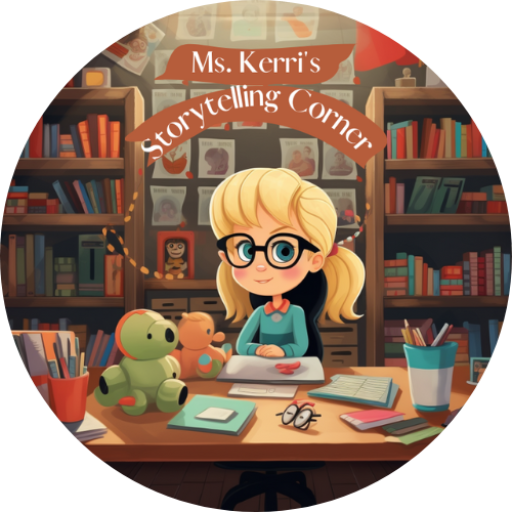
Building strong connections with preschool students is vital for their emotional and social development. These relationships not only enhance their learning experience but also help them feel secure and valued in the classroom. By focusing on effective communication, emotional support, and engaging activities, teachers can create a nurturing environment that fosters growth and confidence in young learners.
Key Takeaways
- Building rapport with preschoolers enhances their learning and emotional growth.
- Effective communication is crucial; use simple language and encourage open dialogue.
- Creating a safe space for children to express their feelings builds trust.
- Engaging activities promote teamwork and help children connect with peers.
- Involving families strengthens relationships and supports children’s development.
The Importance of Building Student Rapport in Preschool Settings
Building strong connections with preschool students is essential for their overall development. Establishing rapport can lead to a more engaging and effective learning environment. When teachers take the time to connect with their students, it fosters a sense of belonging and security.
Understanding the Impact on Learning and Development
- Emotional Safety: Children who feel connected are more likely to take risks in their learning.
- Behavioral Improvements: Strong relationships can lead to fewer behavioral issues in the classroom.
- Increased Motivation: Students are more motivated to participate when they feel valued.
Creating a Positive Classroom Environment
- Welcoming Atmosphere: Greet each child warmly to make them feel special.
- Inclusive Activities: Engage students in group activities that promote teamwork.
- Open Communication: Encourage children to express their feelings and thoughts freely.
Long-term Benefits for Students
- Higher Self-Esteem: Positive relationships contribute to a child’s self-worth.
- Better Academic Outcomes: Students with strong connections often perform better academically.
- Lifelong Skills: Building rapport helps children develop social skills that last a lifetime.
Building rapport with students has been linked to many benefits including lower anxiety, increased motivation, and increased academic learning.
In summary, prioritizing relationship-building in preschool settings is not just beneficial; it is crucial for creating a thriving educational environment. By focusing on these connections, teachers can significantly enhance their students’ learning experiences and emotional well-being.
Effective Communication Strategies with Preschoolers
Encouraging Open Dialogue
Creating an environment where preschoolers feel comfortable sharing their thoughts is essential. Encouraging open dialogue helps children express themselves freely. Here are some ways to promote this:
- Ask open-ended questions like, “What was your favorite part of the day?”
- Share your own experiences to model communication.
- Use playtime as an opportunity to talk and listen.
Using Age-Appropriate Language
When talking to preschoolers, it’s important to use language they can understand. This means:
- Keeping sentences short and simple.
- Using familiar words and phrases.
- Giving clear, easy-to-follow directions. For example, say, “Pick up the ball. Now put it in the box.”
Active Listening Techniques
Active listening is crucial in building strong connections. Here are some techniques:
- Maintain eye contact to show you are engaged.
- Nod and respond to show you understand.
- Repeat back what they say to confirm understanding.
Building strong communication skills with preschoolers is vital for their emotional and social development. When children feel heard, they are more likely to engage and connect with others.
Fostering Emotional Connections
Helping Children Identify and Express Emotions
Fostering emotional connections with preschoolers is essential for their development. Helping children learn to express their feelings can be achieved through various methods:
- Use simple language to describe emotions, like happy, sad, or angry.
- Encourage children to share their feelings during circle time or group discussions.
- Provide worksheets that help them label their emotions.
Creating a Safe Space for Sharing Feelings
Creating an environment where children feel safe to express their emotions is crucial. Here are some strategies:
- Set up a cozy corner in the classroom where children can go to calm down.
- Use storytelling to illustrate different emotions and how to handle them.
- Regularly check in with students to see how they are feeling.
Building Trust Through Consistent Interactions
Building trust takes time, but it is vital for strong connections. Consistent interactions can help:
- Be present during activities to show you care.
- Use positive reinforcement to encourage sharing and participation.
- Engage in one-on-one activities to strengthen bonds.
Building emotional connections with preschoolers is not just about teaching them to express feelings; it’s about creating a nurturing environment where they feel valued and understood.
By focusing on these areas, educators can foster strong emotional connections that will benefit students throughout their lives.
Engaging Activities to Build Relationships
Building strong connections with preschool students can be both fun and effective. Here are some engaging activities that can help foster these important relationships.
Teamwork and Group Activities
- Group projects: Encourage children to work together on simple tasks, like building a tower with blocks.
- Team games: Organize games that require cooperation, such as relay races or group art projects.
- Circle time discussions: Allow children to share their thoughts and ideas in a group setting, promoting communication.
Interest-Based Projects
- Talent sharing: Invite students to showcase their unique skills, like singing or drawing, to help them feel valued.
- Themed activities: Plan projects around topics that interest the children, such as animals or space, to spark their enthusiasm.
- Parent involvement: Encourage parents to share their child’s interests, creating a bridge between home and school.
Play-Based Learning Opportunities
- Role-playing games: Set up scenarios where children can act out different roles, helping them learn empathy and cooperation.
- Creative play: Provide materials for imaginative play, like costumes or building blocks, to encourage collaboration.
- Outdoor exploration: Organize nature walks or scavenger hunts that require teamwork and communication.
Engaging in these activities not only helps children connect with each other but also builds a sense of community in the classroom. Relationships are key to a positive learning environment.
By incorporating these activities into your daily routine, you can create a classroom atmosphere where students feel safe, valued, and connected. Remember, the more they engage with each other, the stronger their relationships will become!
Involving Families in the Relationship-Building Process
Building strong connections with families is essential for fostering a supportive environment for preschoolers. Family engagement plays a crucial role in enhancing children’s learning experiences and emotional well-being.
Communicating with Parents and Caregivers
- Encourage open dialogue: Regularly check in with parents about their child’s progress and experiences in class. This helps parents feel involved and valued.
- Use age-appropriate language when discussing their child’s development to ensure clarity and understanding.
- Share resources and tips on how parents can support their child’s learning at home.
Organizing Family-Inclusive Events
- Plan events that invite families to participate, such as family game nights or art shows. This creates opportunities for families to connect with each other and the school community.
- Consider hosting workshops that focus on parenting skills or child development topics, allowing parents to learn and share experiences.
- Create a family newsletter to keep everyone informed about classroom activities and upcoming events.
Sharing Student Progress and Achievements
- Regularly update parents on their child’s achievements, both big and small. This can be done through report cards, parent-teacher conferences, or informal chats.
- Celebrate milestones together, such as birthdays or project completions, to strengthen the bond between home and school.

- Highlight family contributions in the classroom, such as volunteering or sharing cultural traditions, to foster a sense of belonging.
Involving families in the educational process not only enhances children’s learning but also builds a strong community around them.
By actively engaging families, educators can create a nurturing environment that supports the emotional and academic growth of preschoolers, ultimately leading to a more cohesive classroom community.
Creating a Supportive Classroom Community
Building a supportive classroom community is essential for fostering a positive learning environment. When students feel connected, they are more engaged and motivated to learn. Here are some key strategies to create this sense of community:
Promoting Inclusivity and Respect
- Encourage all students to share their thoughts and ideas.
- Celebrate diverse backgrounds and experiences.
- Establish classroom rules that promote kindness and respect.
Encouraging Peer-to-Peer Connections
- Organize group activities that require teamwork.
- Pair students for projects to help them learn from each other.
- Create buddy systems to support new or shy students.
Developing Classroom Rituals and Traditions
- Start each day with a morning circle to share news and feelings.
- Celebrate birthdays and achievements together as a class.
- Implement weekly themes or activities that everyone can look forward to.
Building a strong classroom community lays the foundation for collaborative learning and world language speaking proficiency.
By focusing on these strategies, teachers can create a nurturing environment where every student feels valued and connected. This not only enhances learning but also helps in developing lifelong friendships among students.
Professional Development for Teachers
Training on Child Development and Psychology
Understanding how children grow and learn is essential for preschool teachers. Professional development programs can help educators grasp the stages of child development, which is crucial for effective teaching. Here are some key areas to focus on:
- Cognitive development
- Emotional growth
- Social skills
Workshops on Effective Communication
Communication is key in building strong relationships with students. Workshops can provide teachers with tools to enhance their communication skills. Consider these strategies:
- Use clear and simple language.
- Encourage questions from students.
- Practice active listening to show understanding.
Collaborative Learning with Colleagues
Working together with other teachers can lead to better teaching practices. Collaboration allows for sharing ideas and strategies that can improve classroom dynamics. Here are some benefits of working with peers:
- Sharing resources and materials
- Gaining new perspectives on challenges
- Building a supportive network
Engaging in ongoing professional development is vital for teachers to stay updated and effective in their roles.
By focusing on these areas, teachers can create a more supportive and effective learning environment for their preschool students. Investing in your growth as an educator ultimately benefits the children you teach.
Conclusion
In conclusion, forming strong connections with preschool students is essential for their growth and development. By encouraging interactions with peers and adults, we help them feel part of a larger community. Activities that promote teamwork and sharing can enhance their social skills and self-esteem. It’s crucial to create a safe space where children can express their feelings and be heard. Remember, the relationships we build today will shape their future. So, let’s prioritize these connections and watch our students thrive!
Frequently Asked Questions
Why is it important to build relationships with preschool students?
Building relationships with preschool students is crucial because it helps them feel secure and valued. When children have strong connections with their teachers and peers, they are more likely to engage in learning and develop social skills.
What are some effective ways to communicate with preschoolers?
Effective communication with preschoolers includes using simple language, encouraging them to express their thoughts, and actively listening to what they say. It’s also helpful to ask open-ended questions to keep the conversation going.
How can I help preschoolers express their emotions?
You can help preschoolers express their emotions by encouraging them to talk about how they feel. Use activities like drawing or storytelling to help them label their emotions and share their experiences.
What activities can promote teamwork among preschoolers?
Activities that promote teamwork among preschoolers include group games, collaborative art projects, and play-based learning where they must work together to achieve a common goal.
How can I involve families in the learning process?
Involving families can be done by communicating regularly with parents, inviting them to participate in classroom activities, and sharing updates about their child’s progress and achievements.
What role does a supportive classroom community play?
A supportive classroom community fosters inclusivity and respect among students. It encourages friendships and helps children feel safe, which is essential for their overall development.


Ms. Kerri’s Corner provides a exciting virtual space for preschool learning. Through a variety of engaging activities, she exposes young minds to early math, literacy, science and social-emotional skills in a developmentally appropriate way. Centers for blocks, art, books and music allow children to explore hands-on learning at their own pace. Guided lessons subtly introduce number sense, letter sounds and narrative thinking. Careful observation gives insight into each child’s progress across domains. Viewers are also invited to participate, reinforcing that their ideas are valued. By making learning fun yet purposeful, Ms. Kerri lays the groundwork for future academic success while fostering creativity and imagination. Her program offers preschoolers valuable screen-based learning experiences.





